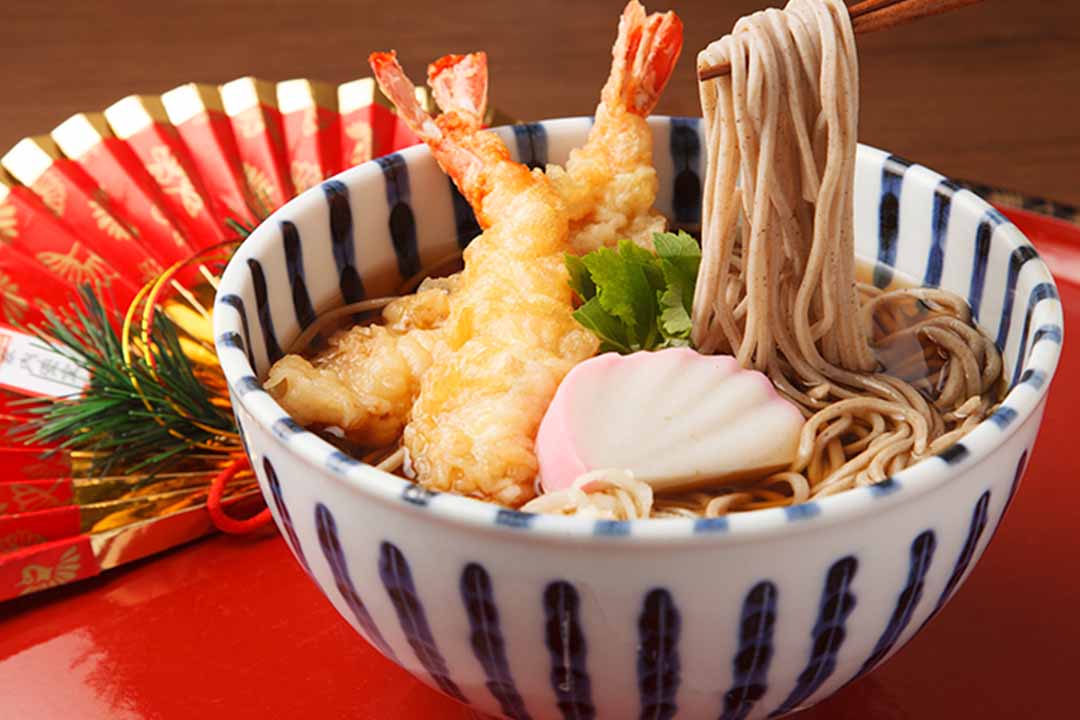Japanee food and events
In Japan,where you can enjoy various ingredients from the mountains and seas in each of the four seasons,there are customs of event food.
The event meal is eating with gratitude for the blessings of nature,using seasonal ingredients.
It can be harvested originally for special days such as festivals and events that people have celebrated for a long time.
Also,seasonal food includes highly nutritious and can be enjoyed the most deliciously.
Please see monthly events foods that you can enjoy delicious food.
January
- “New Year” January 1th-3th,New Year dishes (Osechi dishes),Ozoni,Kagamimochi
- Once a year,we welcome Toshigami to celebrate a new year of a good harvest.
We serve Osechi dishes and Ozoni,and Kagamimochi. - “Man-day/Nanakusa no sekku” January 7th,Nanakusa porridge
- Seven herbs porridge using spring seven herbs,auction,shepherd’s purse (penpen grass),
gogyo (another name for hahako grass,actually put yomogi),chickweed,henbit,turnip,radish I’ll enjoy having this.
Originally it was a custom to get rid of evil spirits,but now it also means to rest the stomach after eating a feast on New Year’s Day.
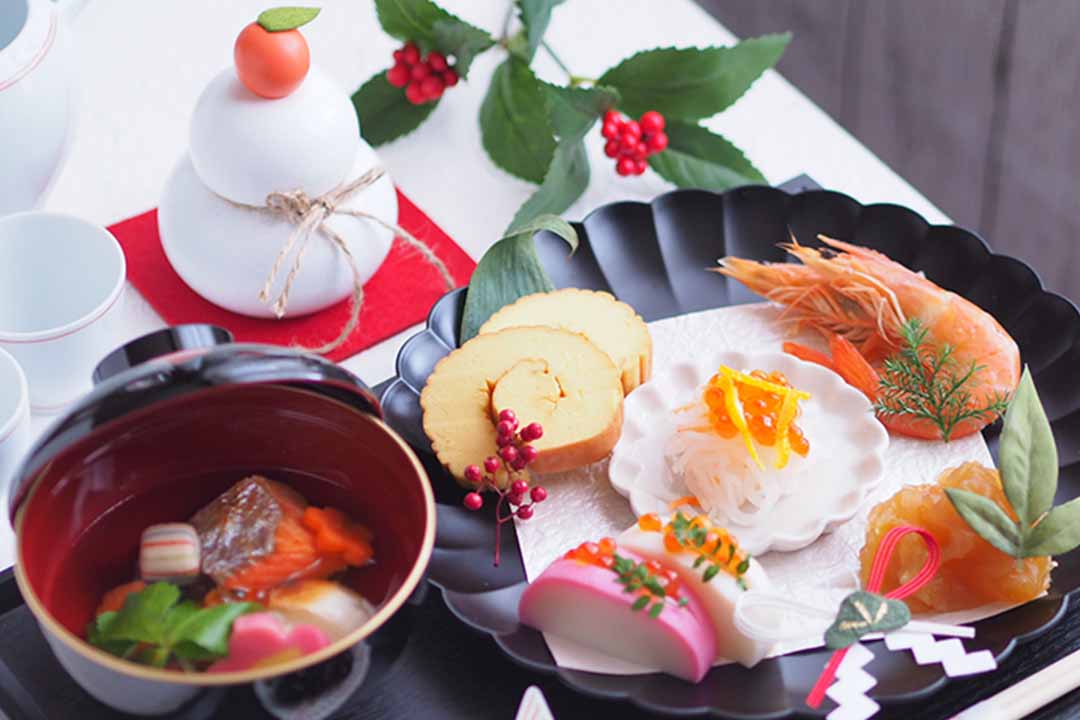
Feburary
- “Setsubun” Around February 3th,Fukumame (roasted soy beans)
- Since the Edo period,the day before the beginning of spring is called Setsubun.
On that day,people throw away Fukumame to get rid of the Oni (an invisible evil spirits)
and people eat Fukumame as numbers as their age to get rid of bad luck. - Ehoumaki (sushi rolls)
- Ehoumaki wrapped with 7 kinds of ingredients representing the Seven Lucky Gods.
If you turn to Ehou (the lucky direction) of the year and eat,everything will be considered good,
and we hope that you will have no illness and that your business will prosper. - Sardine
- Some people decorate their entrances sardine heads and holly leaves to get rid of evil spirits and ward off bad luck.
Also,eat sardine to get rid of evil. - Fukucha
- Celebrate your health by drinking Fukucha,which is made by putting kelp,salted plums,and Fukumame in a bowl and pouring hot water into it.
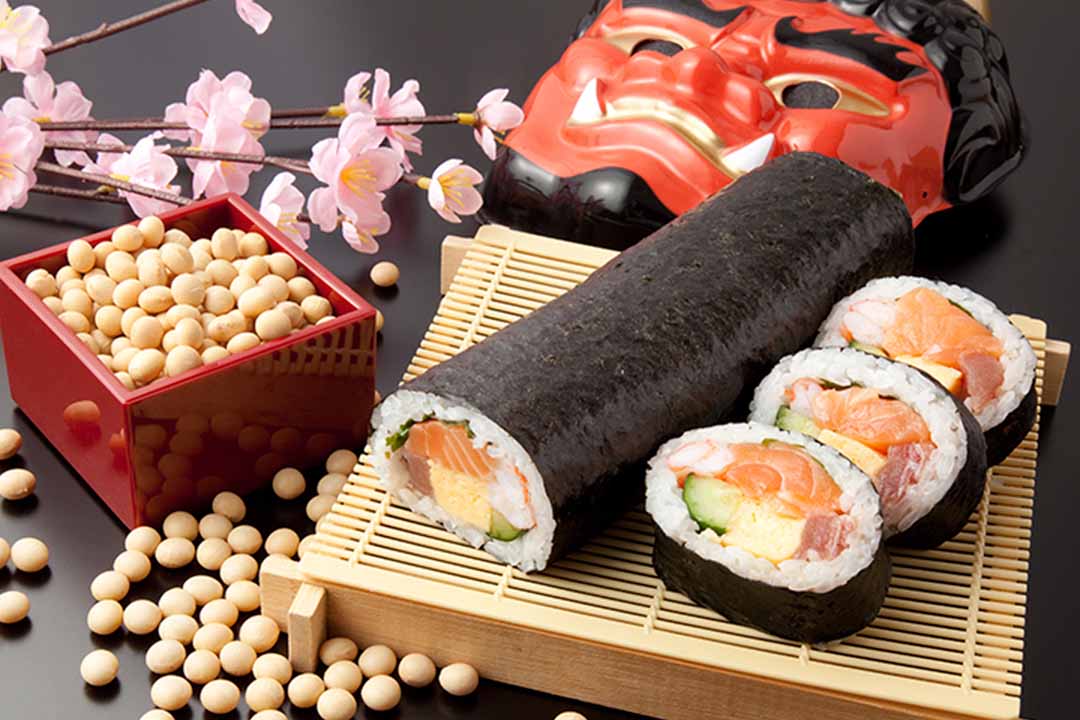
March
- ”Hinamatsuri/Peach Festival” March 3th,Hishimochi,Shirozake
- It is one of the five festivals that color the four seasons and is called the “Peach Festival”.
It is an event to decorate the Hina-ningyo (dolls wearing beautiful kimonos) and wish for the safe growth of the girl.
Hishimochi is made by stacking red (pink),white,and green rice cakes in a diamond shape.
Red (pink) stands for “peach blossom”and means “amulet”,white stands for “snow” and means “clean”,
and green mugwort means “health”and “get rid of evil”.
White liquor,Shirozake is made by mixing steamed rice and malt with mirin (cooking sake) and shochu (Japanese sake). - Hina-arare
- The basic color of Hina-arare is “red,white,green”,which is the same as Hishimochi,and you can eat it hoping for the healthy growth of your daughter.
- Clam Osuimono
- Clamshells,which are in season from February to April,
can be compared to a close couple who will stay with them for the rest of their lives because only the pair of calms fit together. - Chirashizushi
- Chirashizushi looks very gorgeous,using a lot of auspicious mountain seafood such as “shrimp” which means longevity,
“lotus root” which is said to have a good outlook,and “beans”which are healthy and can work diligently. - Botamochi
- Three days before and after (7 days in total) are called equinox,with the vernal and autumn equinox days as the middle days,
and Botamochi (peonymochi) is served on the equinox in spring.
It is eaten when the spring peony flowers bloom.
April
- “Hanami” Late March-April,Hanami dumplings
- When the cherry blossoms bloom in spring,we go out to the mountains to see the cherry blossoms for farming to pray for a good harvest.
Hanami dumplings are eaten at the time.
From the top,pink,white,and green are often put on skewers to express the changes in the cherry blossom trees,
such as cherry blossom buds,cherry blossoms when in full bloom,and hazakura(cherry tree in leaf). - Sakuramochi
- It is said that Sakuramochi was first sold by the gatekeeper of Chomeiji Temple,
who made salted leaves from the fallen leaves of the cherry blossoms and wrapped them in bean paste.
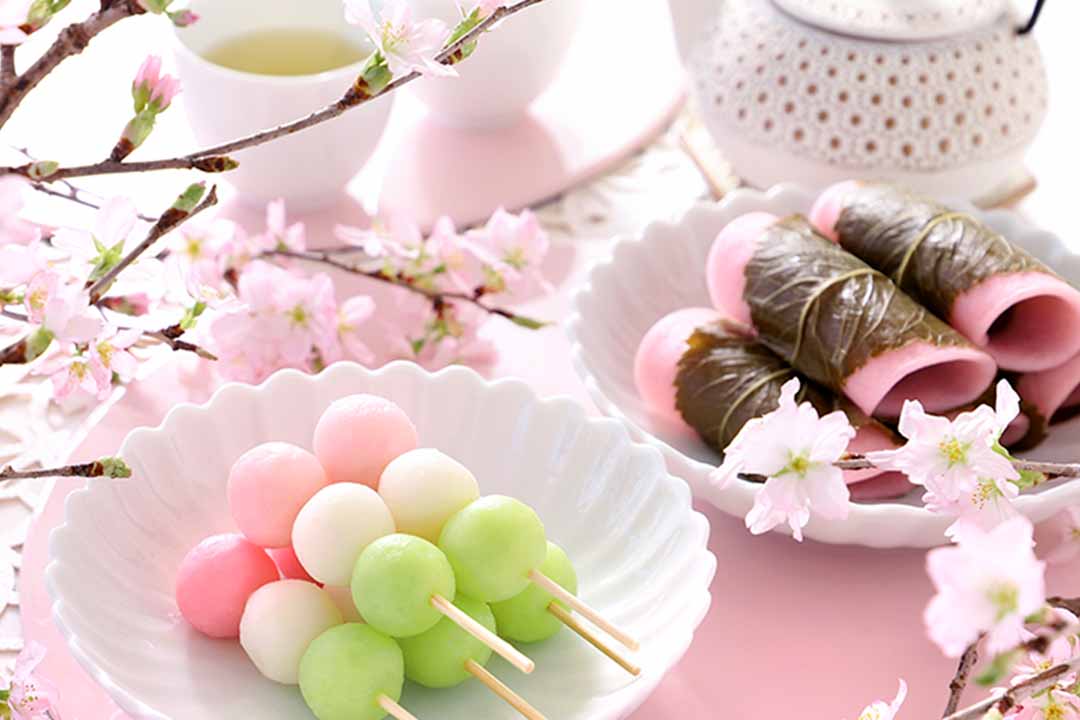
May
- “Children’s Day/Tango no Sekku” May 5th
- Decomposing the word “Tango”,”tan” means “beginning”,and”go”means May in the lunar calender,
and”Children’s Day”means “the day of the first noon in May”.
We often eat Kashiwamochi in the Kanto region and Chimaki in the Kansai region with the meaning of healthy growth and warding off evil. - Kashiwamochi
- The Kashiwa tree used in Kashiwamochi is said to be auspicious because the old leaves do not fall until the next sprout emerges.
- Chimaki
- Chimaki seems to make sense to wrap it with bamboo leaves and iris leaves,which have a strong scent.
June
- Nyubai-Iwashi (Sardine)
- Nyubai-Iwashi:It’s the most greasy and delicious in a year,and eating for getting in shape before summer.
July
- “Half-summer” around the beginning of July,octopus
- The octopus has eight legs and has many suction cups.
Therefore,we eat octopus,which is the season of this season with the hope that the rice after planting will take root firmly and not leave. - “Tanabata/Tanabata no Sekku” July 7th,Somen
- Tanabata has a custom of eating Somen noodles,hoping for a disease-free life,as if it were the Milky Way or thread.
- “Summer Day of the Ox”,Unagi(eel)
- Day of the Ox means 18 days just before the beginning of spring,summer,autumn,and winter.
Nowadays,it is generally customary to eat eel on the day of the Ox,which is summer soil.
Besides eel,it is better to eat foods with “U”.
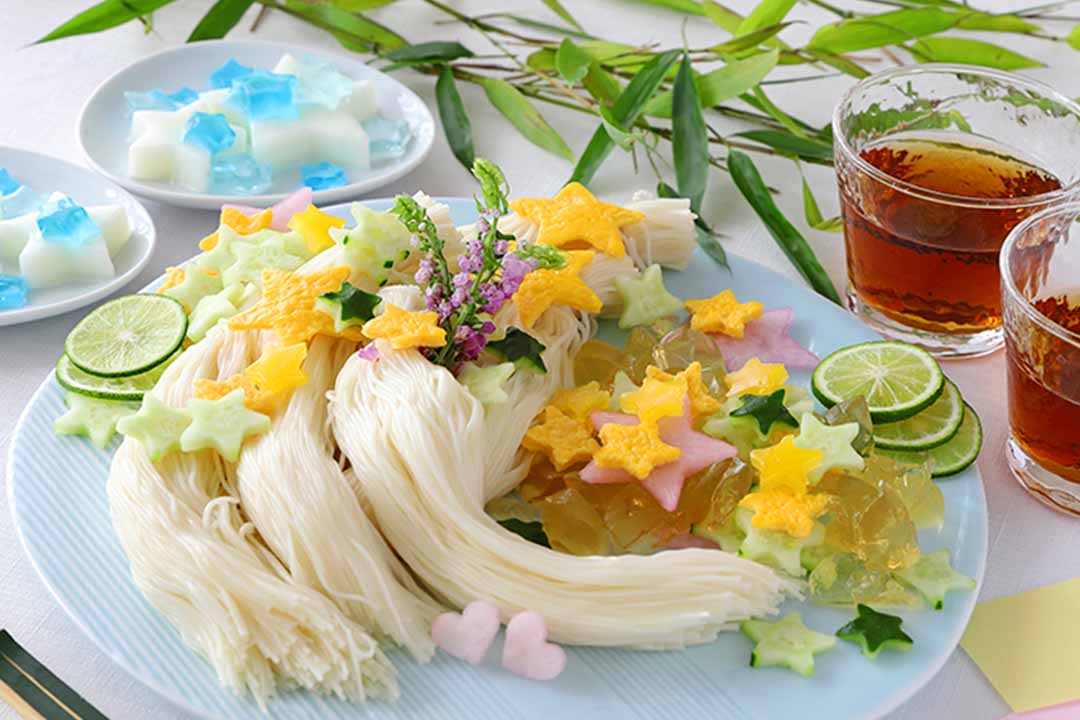
August
- “Obon”(Bon Festival) August 13th-15th,Vegetarian Cuisine
- Vegetarian cuisine was conceived because the killing of animals was prohibited in Buddhism.
It is a dish made from beans,vegetables,seaweed and fruits without using meat or fish.
We celebrate and give thanks for the abundant summer harvest and eat it with our ancestors.
September
- “Double Ninth Festival/Kiku no Sekku” September 9th,Chrysanthemum wine
- It is one of the Five Seasonal Festivals,and people drink chrysanthemum wine soaked in chrysanthemum flowers,
which are believed to have medicinal properties and to ward off evil spirits,wishing for good health and long life.
“Choyo-no-Sekku” (Double Ninth Festival) is also called “Chestnut Festival” because it coinsaides with the harvest time of chestnuts,
and is celebrated by eating rice with chestnuts. - rice cooked with chestnuts
- The three days before and after the vernal equinox and the autumn equinox (seven days in total) are called “Ohigan”.
The bean paste used in Ohagi is made to look like a bush clover flower blooming in autumn. - moon viewing dumplings
- On the “Mid-Autumn Moon” or the “Fifteenth Night”,we offer dumprings that look like the moon and watch the moon.
We also celebrate the “13th night” that comes after the “15th night” to make it a “double viewing moon”,
which means that we have completed our moon viewing.
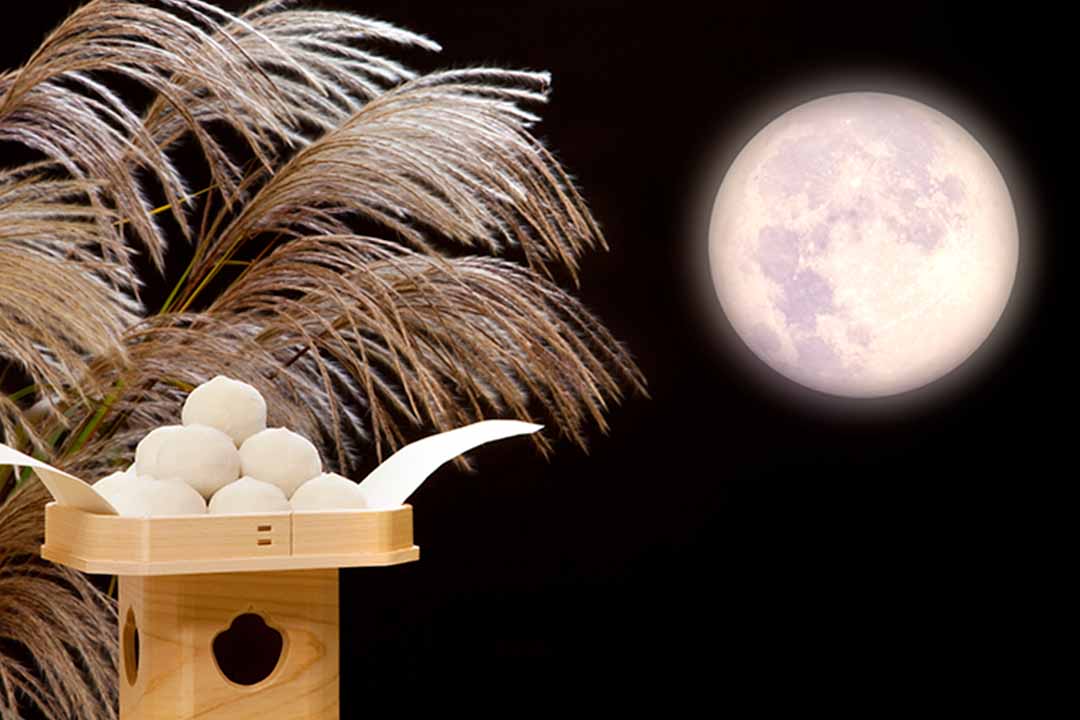
October
- “Thirteenth Night”
- We offer dango (moon viewing dumplings) and eat dishes made from chestnuts and soy beans harvested during this season.
November
- “God Welcoming Day” November 1th,Red rice
- On the first day of November (the first day of the month of welcoming gods),
we cook and eat Sekihan (Red rice) to welcome the gods who went to Izumo in October back to their respective shrines. - Chitose Candy for “Shichi-go-san”
- Chitose Candy is given at the Shichi-Go-San celebration with the wish that the child will be thin,
long and tenacious,and to live long and healthy forever.. - Boar Rice Cake “Boar’s Day,the first day of the month of the boar”
- Mochi (rice cakes) mixed with grains are made in honor of the wild boar,
which gives birth to many children,to wish for prosperity of the offspring.
December
- ”Winter Solstice ” December 21th or 22th,pumpkin
- This is the day when the daylight hours are shortest,
and people eat nutritious pumpkins and soak in yuzu bath to survive the long winter. - “New Year’s Eve” December 31th,Toshikoshi Soba
- Soba (buckwheat noodles) are long and stretchy,so the wish for longevity is included in this custom.
It also has the meaning of cutting off all bad luck.
